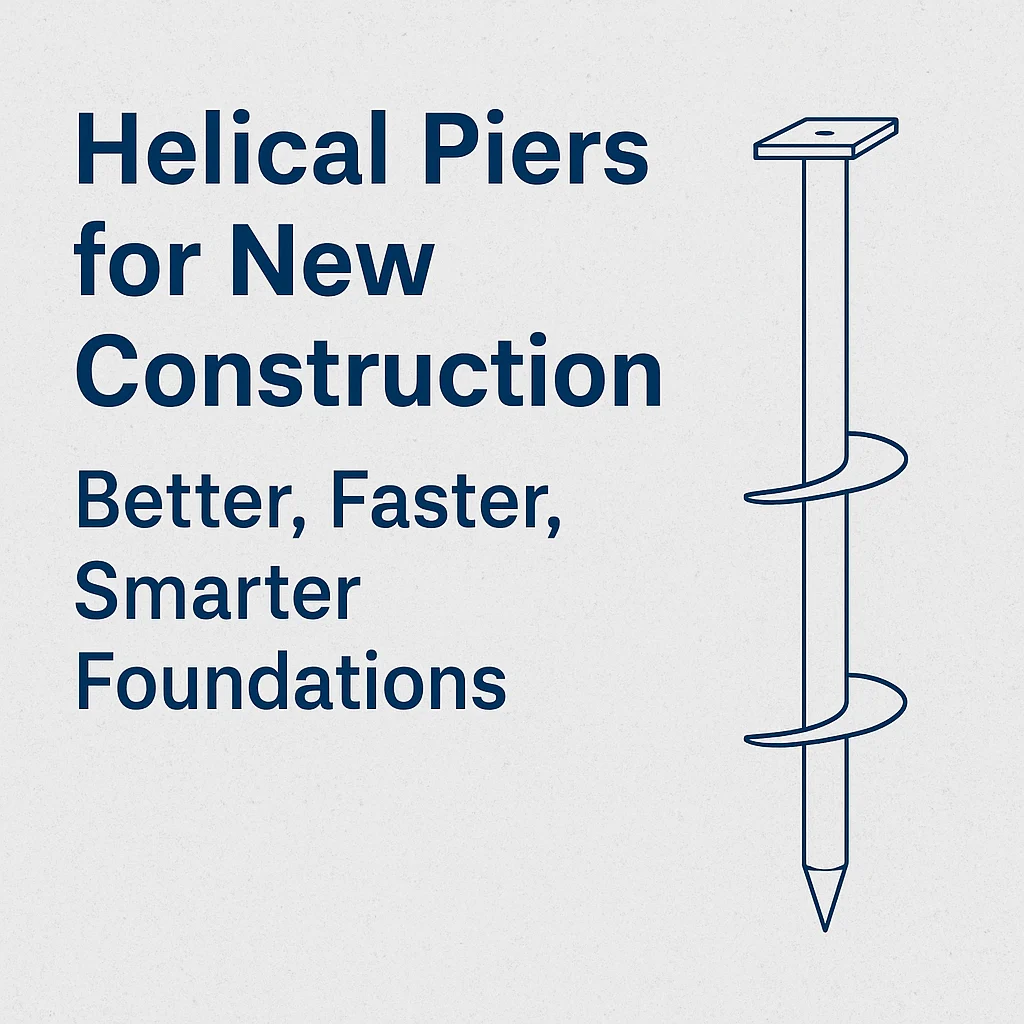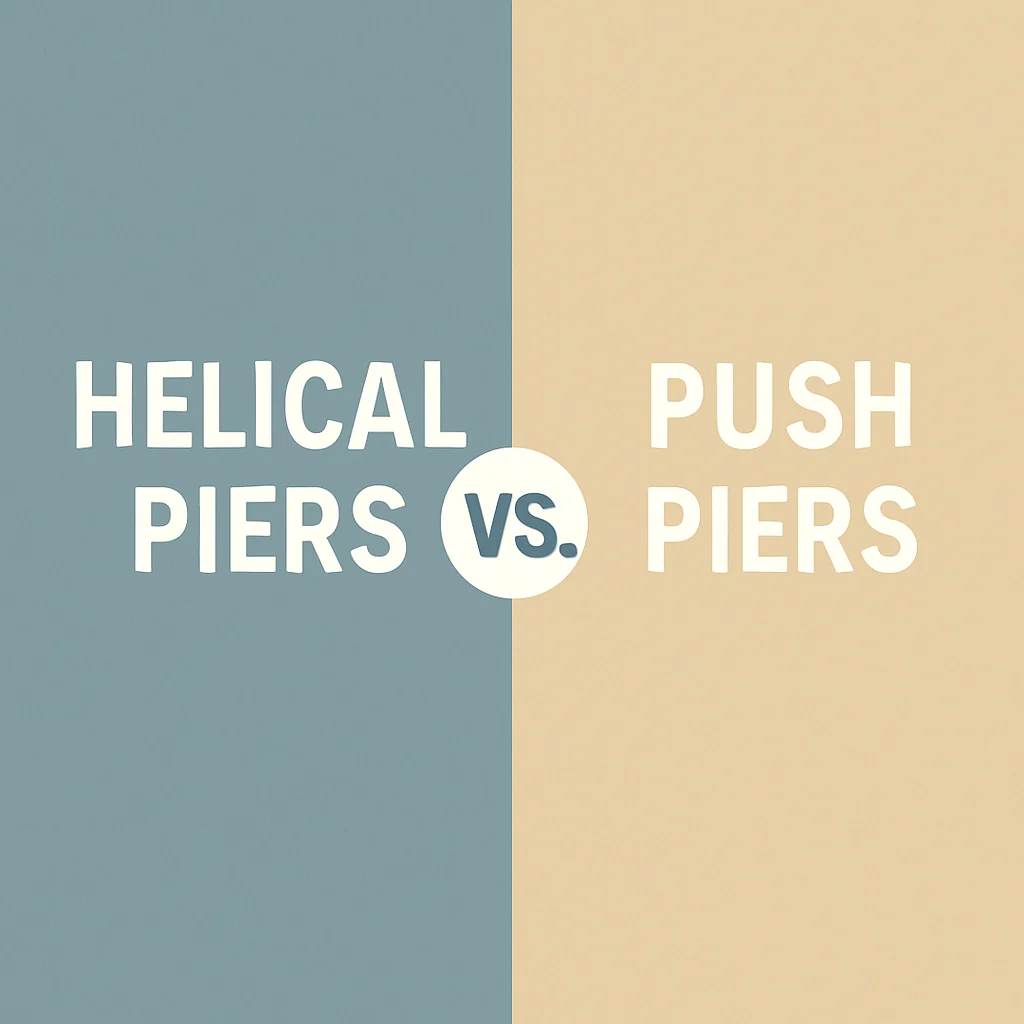
Helical Piers for New Construction: Better, Faster, Smarter Foundations
Introduction: When it comes to building a strong, stable structure, the foundation is everything. Traditional concrete footings have long been
At FnD Piers, we get a lot of questions about foundation repair methods, and one we’ve heard more than a few times lately is:
“Why don’t you use concrete push piers?”
It’s a fair question. On the surface, push piers might seem like a quick and affordable option. But when it comes to long-term foundation stability, they just don’t hold up—literally.
In this post, we’re going to break down exactly why we don’t recommend push piers, using a real-life example from a recent school project we’re working on in Lipan, Texas. What we found under this school building shows exactly why concrete push piers are a gamble, especially when the stakes are as high as the structural safety of a building.
We were on-site at Lipan ISD, prepping the area for our helical pier system. As we began excavation under part of the school building, we uncovered what we believe to be one of the original concrete push piers from a previous foundation repair project. According to the school, this pier was installed in 2019—only a few years ago.
Here’s what we found:
That’s not the kind of stability you want under a building full of students, teachers, and valuable equipment. If you can move a support pier back and forth by hand, it’s not really supporting anything.
Push piers—often made from concrete or steel—are vertical shafts installed under a foundation by pushing them into the ground using the weight of the building itself. The basic idea is to drive the pier deeper and deeper until it hits resistance (what’s called the “point of refusal”), then stop and shim the gap between the pier and the foundation above.
The problem is… this method depends entirely on the weight of the structure and the resistance of the soil. And that’s a risky combo.
If the soil is soft, or the building isn’t heavy enough to push the pier deep enough, you end up with a pier that’s barely below the surface—sitting in unstable soil that will continue to shift and settle. Even worse, the pier might feel solid at first, only to loosen over time as the soil gives way again.
Here’s the issue with push piers in plain terms:
At the end of the day, you need your foundation to be rock-solid. A pier you can move with your finger is not doing its job.
At FnD Piers, we install helical piers because they do what push piers can’t:
Helical piers aren’t just a better option for weak soils—they’re a reliable solution. We don’t rely on guesswork or gravity. We use measured torque values and proven depth to ensure every pier is secure and holding its load.
We understand why some contractors or homeowners might go for push piers. They can be cheaper. They go in fast. And on paper, they might look like a viable fix.
But foundation repair is one area where shortcuts turn into expensive do-overs. What looks like savings today can become a major repair tomorrow—especially when your pier system fails and the building shifts again.
As we’ve seen firsthand, push piers can:
At FnD Piers, we don’t believe in band-aid fixes. When we put our name on a project, we’re committing to a foundation that lasts.
So, we keep topping off the hole as we dig. The idea is that every time we take a “bite” of material with the auger or mud bucket, we also add slurry back in. This allows us to make real progress—not just digging 21 feet and finding ourselves back at square one—but digging one to one and a half feet deeper with each bite. If done properly, this step-by-step progress will take us cleanly down to the target depth.
If you find yourself in need of foundation repairs due to preexisting push piers, don’t hesitate to give us a call so we can get you back on solid ground!

Introduction: When it comes to building a strong, stable structure, the foundation is everything. Traditional concrete footings have long been

When it comes to foundation repair, choosing the right underpinning solution is crucial for the longevity and stability of your